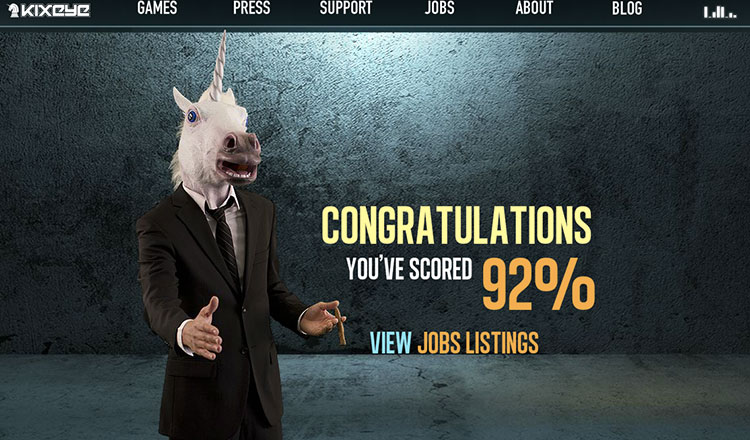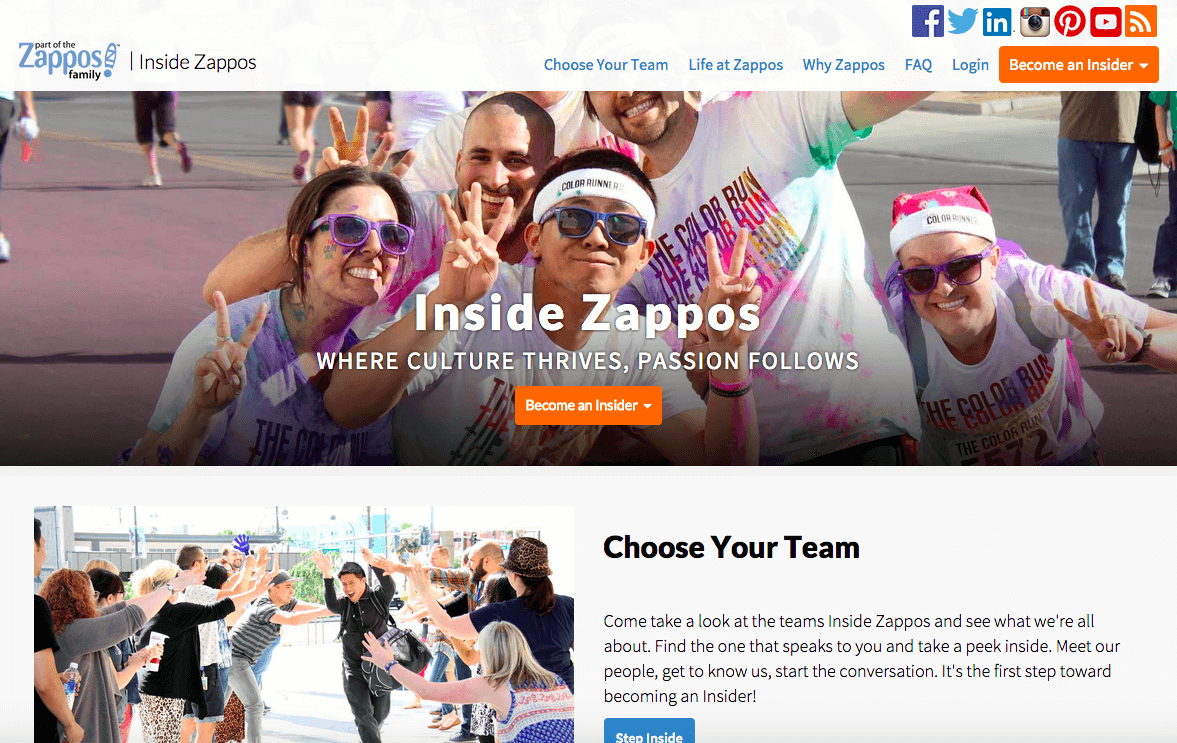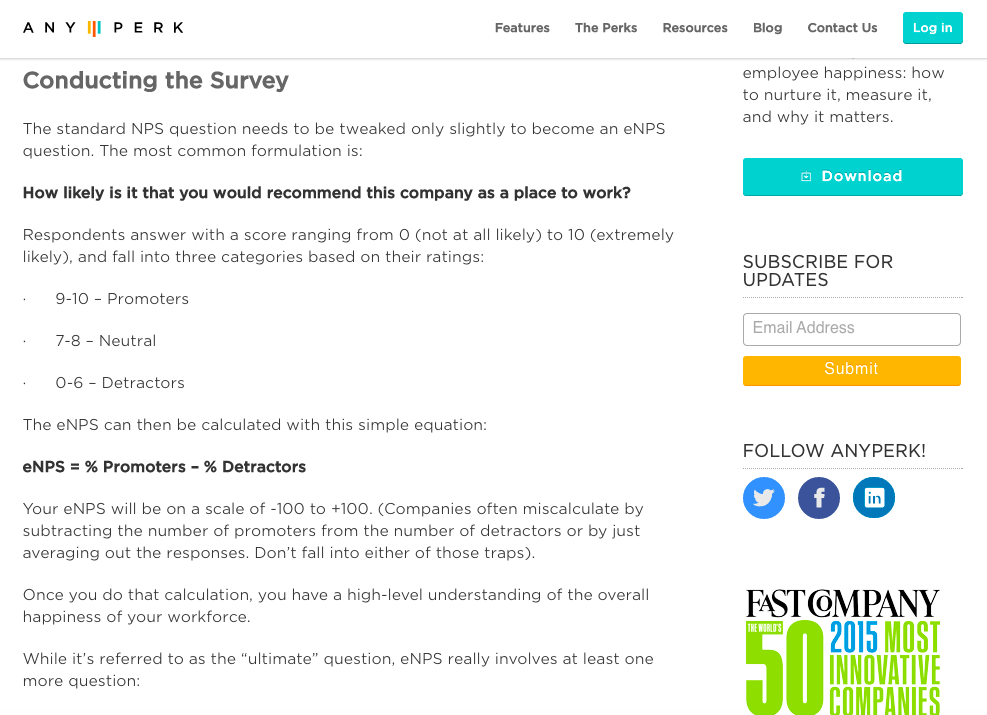The statistics read like the script for a horror film: 70% of employees are disengaged at work. The working dead haggardly hack away at their computers and drag their lifeless bodies through the motions.
We are experiencing an epidemic of toxic workplaces, with 17.5% of employees so actively disengaged that they may be purposefully sabotaging their employers. How did we get here? And how do we avoid this?
A huge part of the employee engagement problem stems from poor culture fit. When someone feels at odds with their job, their coworkers, or their manager, their work suffers, their attitude stinks, and their very presence can suck the lifeblood out of the entire company.
So how do you create a compelling company culture that attracts superstars and repels zombies?
The Case for Cultural Fit
First, just in case you think this company culture business is some woo-woo concept that’s only relevant to granola-crunching hippies, I’ve got a couple of hard facts for you. Psychologist Natalie Baumgartner attributes 89% of an employee’s success on the job to cultural fit. Or, put another way, a mere 11% of an employee’s success on the job depends on their ability to do the work.
Happiness at work can manifest itself in several ways: the length of time an employee stays with you, the quality of their on-the-job performance, and their commitment to your company and its values. Perhaps not surprisingly, researchers Amy Kristof-Brown, Ryan Zimmerman, and Erin Johnson found that employees who fit well with their organization, coworkers, and supervisor consistently scored higher in these areas than their counterparts who were not as aligned with their environment.
One of the factors that has the biggest impact on someone’s workplace happiness is having a friend at work. Economists have even put a number on this (typical economist behavior, isn’t it?). Having a friend you see most days is equivalent to earning an additional $100,000 a year.
And happiness at work doesn’t just affect employees on an individual level. Glassdoor has found a correlation between companies that have a healthy workplace culture and their overall financial performance. If you’ll allow me to be all economist about it for a moment, “an investment in Glassdoor’s “Best Places to Work” companies would’ve grown to between $2,797 and $3,470, far outpacing the $2,210 for the overall market.” So you can see that taking the time to build a positive company culture quite literally pays off.
The Honeymoon Phase of Company Culture (and Its Bittersweet End)
When you’re a small startup, you may not spend much time or energy building your company culture. Luckily, it’s pretty easy for the CEO to have a heavy hand in the hiring process and draw upon a pool of friends and friends-of-friends, which can automatically create a culture of people who share similar values. This is how it worked for Tony Hsieh when he started LinkExchange, and then again when he joined Zappos, where he now is the CEO. Countless other startups follow the same pattern.
But if things go the way you hope, at some point, you’re going to have to hire outside your friend group. Plus, your organization will be growing so quickly that the CEO will no longer have time to personally meet with each candidate.
So how do you keep company culture a priority once the honeymoon is over and your company still needs to grow?
Here are three approaches to building a positive company culture:
1. Make Your Business Attractive with Content Marketing
Marketing genius Seth Godin has quipped that “the only marketing that’s left is content marketing.” We might often think of content marketing in the context of products or services, but it’s also an excellent way to educate prospective candidates about what it would be like to work for a company.
One of the HUGE advantages of content marketing as a recruiting technique is that you get to set the tone and build your employer brand in precisely the way you want to.
Use video, blog posts, infographics – or whatever format makes the most sense for you – to send out the message about what your company is all about, what it’s like to work for you, and what type of person you’re looking for.
People who are interested in you can discover this content through a Google search, via social media, or even on the “careers” page of your website. Giving candidates the ability to discover you on their own terms can completely transform the application experience.
Take, for example, the HubSpot Culture Code, a document that was originally designed to define HubSpot’s company culture internally. Since HubSpot decided to make the presentation public on SlideShare, it has earned a cool 1.6 million views. Katie Burke, Director of Talent and Culture, has called it the company’s “top recruiting tool bar-none.”
HubSpot’s Culture Code has attracted 1.6 million views on SildeShare and is considered their top recruiting tool.
So how exactly does one piece of content become a recruiting tool?
Influence & Co CEO John Hall spells it all out in this Harvard Business Review article, “Your Content Strategy Is Also a Recruiting Strategy”:
“Imagine that the ideal candidate finds an article that you published in an outside publication. As she reads the article, she develops a deeper understanding of your industry niche.
“Clicking through to your social media presence, she finds herself immersed in your team’s content. Your blog posts, LinkedIn discussions, and tweets come together to create a clear picture of what it’s like to work at your company. The candidate feels a sense of connection to your corporate culture and decides to send in her résumé.
“At the interview table, she proves herself knowledgeable about your business strategy. She understands the industry and has a clear idea of how she can contribute to growth. While other interviews were stiff and formal, this one is conversational and exciting.
“The candidate gets the job. Because she has access to all your digital content, much of her training is self-directed, and it begins immediately. This new hire is ready to add value the moment she joins the team.”
Hall goes on to say that this is not a hypothetical situation. Numerous employees have come to his organization through this precise path. In Hall’s words, content is their “most powerful recruiting tool.” (Are you noticing a trend here? Yeah, so am I.)
Now here’s a fun example of how you can really infuse company culture and personality into your recruiting content.
Is your crew an irreverent band of gamers? That’s certainly the case for the folks at Kixeye. So instead of just listing off their current job openings in the typical “careers” page style, they offer the “Are you one of us?” quiz.
Kixeye uses interactive content to appeal to potential employees, and scare off those who wouldn’t be a good fit.
Applicants start by selecting their weapon of choice and then take aim at various inanimate objects to answer questions like, “How do you describe your coworkers?” At the end, they get a compatibility score. (Somehow, viewing your coworkers as “potential dates” and your dream job as “secret agent” earns you a score of 92%. Go figure.)
Once you’ve completed the quiz and cemented your interest in Kixeye, you’re prompted to view the current job openings.
This is actually pretty brilliant on Kixeye’s part. Anyone interested in working for them will probably have no problem spending an additional two minutes on their site taking the quiz, and most potential applicants will find it hilarious that they’re shooting a Desert Eagle at a can of SPAM.
If anyone is turned off by this or any of the content in the quiz (like referring to your manager as a douche, for example), they’re probably not a good fit for Kixeye. So the company manages to appear even more attractive to applicants who can get down with their foul-mouthed culture, while weeding out those timid souls who wouldn’t last a day in their sassy offices.
Sounds relatively simple, right?
But getting candidates flocking to you is just the first step in building a positive culture. Next, you’ll need to make sure you’re considering cultural fit during the interview stage.
2. Hire Candidates That Fit Your Culture like a Glove
Building an attractive culture and sharing it with the world is a good start, but it’s not enough. You’ll also need to make sure that your hiring practices set you up for maintaining a strong company culture.
You can easily build some cultural aspects into your interview by asking candidates questions that relate to your core values or inviting them to participate in a social event like a team lunch or happy hour.
Or you can take it up a notch like some of the companies known for being über-protective of their culture.
At Netflix, for example, the approach to hiring is simple. Former Chief Talent Officer Patty McCord explains, “The best thing you can do for employees – a perk better than foosball or free sushi – is hire only ‘A’ players to work alongside them. Excellent colleagues trump everything else.”
Other companies, like Zappos, use company values as a litmus test for culture fit. Zappos holds two separate interviews: one where a candidate is assessed on their abilities and one where the interviewer determines their cultural fit. During the cultural fit interview, a candidate will be asked at least one question related to each of Zappos’s ten core values.
Cultural fit is so important, CEO Tony Hsieh explains, that Zappos has “passed on a lot of smart, talented people who we knew could make an immediate impact on our top or bottom line because they weren’t a fit for the company culture.”
The Zappos interview doesn’t just take place in some stuffy office. Candidates are assessed on every interaction, like the one they had with the driver who picked them up at the airport. It’s also common for candidates to be invited to company or department events so that their potential coworkers can meet them in a casual setting.
Zappos has also introduced the “Zappos Insider” program, where candidates can create a profile and express their interest in working for Zappos at some point in the future. Part of the profile includes a “video cover letter” that gives applicants the chance to let their personality shine through and demonstrate why they think they’re a good fit.
The Inside Zappos portal, where potential candidates can create a profile and show off their cultural fit.
Hiring for cultural fit is one way to keep your company on track and discourage those disconnected zombies from joining the team. But as we all know, most people don’t start a new job already deadened and disengaged. It can take months or years of a toxic environment to wear down employees who started out chipper and cheerful. In the next section, we’ll look at a few ways to avoid turning your existing employees into zombies.
3. Ask Employees for Feedback on a Regular Basis
As your company grows, how do you ensure that new hires and more senior employees stay on the same page?
One simple method, advocated in the Deloitte University Press 2015 Global Human Capital Trends report, is to ask for feedback. Regularly surveying your employees gives them the chance to air any grievances before they begin to fester and sends the message that management actually cares about their experience.
Getting feedback is especially important during the crucial early stages of an employee’s time with you. Dissatisfaction during the first 90 days on the job leads 17% of employees to quit within this timeframe.
Create a culture of feedback from the very beginning, and you’ll show employees that their input matters. Of course, this means that you’ll actually have to listen and respond to feedback.
A survey doesn’t need to be anything too fancy. In a Harvard Business Review report, the head of Bain & Company’s Global Customer Strategy and Marketing Practice, Rob Markey, advocates using the Net Promoter System (NPS) to measure employee satisfaction and engagement. NPS relies on a simple question:
“How likely is it that you would recommend this company, or this product or service, to a friend or colleague?”
AnyPerk offers step-by-step instructions on calculating your employee NPS and suggests following it up with the question, “What’s the primary reason for the score you gave?”
AnyPerk’s step-by-step instructions on how to calculate your employee Net Promoter Score.
The AnyPerk post warns that your eNPS number may be shockingly low, so try to mentally prepare yourself for this possibility. This is why that follow-up question is especially important, since it’ll allow you to understand the context of employees’ satisfaction or dissatisfaction. Try to capitalize on the points the promoters highlight and address the points the detractors identify in order to get the most out of your survey results.
A Few Final Thoughts
Company culture might sound like a loosey-goosey concept, but it has a very real impact on your company’s bottom line. As Katie Burke of HubSpot puts it, when it comes to company culture and finding the right people, “the soft stuff is the hard stuff.” Taking the time to define and purposefully build a positive company culture will attract top talent, ensure your employees are engaged, and keep the life-sucking work zombies at bay.
About the Author: Melissa Suzuno is the Content Marketing Manager at Parklet, the leading employee experience solution that helps companies solve the biggest headaches around new hire experience, employee engagement, and talent development. Follow the Parklet blog for insight into onboarding, company culture, and other topics related to employee engagement and happiness.





No comments:
Post a Comment